Horizon 2020, European Research Council, Global/EU
The National Center of Competence in Research (NCCR) Bio-Inspired Materials was established in 2014 to be an internationally recognized hub for smart materials research, education, and innovation. In March 2020, NCCR’s Bioinspired Materials Principal Investigator, Professor Francesco Stellacci (from Federal Institutes of Technology in Lausann) won the prestigious Advanced Grant by […]
This paper describes a micro-needle that is coated with the drug/vaccine that is intended to be injected. This biomimetic approach is inspired by some European true bugs that “facilitate a directional liquid transport.” The bugs have microstructures that can transfer defensive liquids from […]
News, Snake infrared detection unravelled
Scientists have discovered the receptors that allow snakes to find prey in the dark. Snakes can ‘see’ in the dark thanks to protein channels that are activated by heat from the bodies of their prey. Vipers, pythons and boas have holes on their faces called pit organs, which contain a membrane that can detect infrared […]
Scientists have developed a new gene-therapy technique by transforming human cells into mass producers of tiny nano-sized particles full of genetic material that has the potential to reverse disease processes. The technique takes advantage of exosomes, fluid-filled sacs that cells release as a way to communicate with other cells. This new […]
Inspired by the phenomenon of water droplets hanging over rose petals, we propose a green interfacial self-assembly strategy to construct amphiphilic particles with controllable compartments for dual-drug encapsulation and controlled release. The method involves fabrication of “sticky” superhydrophobic materials, assembling superhydrophilic hydrogel beads with “sticky” superhydrophobic material into an amphiphilic particle, and amphiphilicity induced self-organization […]
The Wyss Institute is developing methods of capturing the CoV2 particles and then using them to quickly identify them within an hour. Also, they are finding ways to use bioinspired DNA nanotechnology that will enable people to detect viral RNA and proteins in a sample that is […]
New artificial proteins have been created to function as molecular logic gates. Like their electronic counterparts in computers, these biochemical tools can be used to program the behavior of complex systems, such as gene regulation inside human T-cells. This new advance might improve the durability of future cell-based therapies.
The DownSpout System is a biomimetic solution that treats and stores rainwater and runoff in a similar way to a marshland or riparian edge. Through an investigation of these ecological systems in plant species, corresponding root depths, soil types, and hydrological zones, we have created a system that can be customized […]
The Biomimicry Institute and Biomimicry South Africa have launched a new course covering the fundamentals of biomimicry. Called ‘Learn Biomimicry’, the online course kicks off in support of the Earth Day Network’s call for creative, innovative, and brave solutions needed to regenerate and repair the damage done to the planet.
Today’s autonomous drones have reaction times of tens of milliseconds, which is not enough for navigating fast in complex dynamic environments. To safely avoid fast moving objects, drones need low-latency sensors and algorithms. We departed from state-of-the-art approaches by using event cameras, which are bioinspired sensors with reaction times of microseconds. […]
The Biodesign Immersion Experience (BIE) is an NIH-sponsored 8-week summer program that focuses on the first two stages of the biodesign process: needs finding and needs screening.
Glasses have numerous applications due to their exceptional transparency, however, poor fracture and impact resistance limit their applications as an engineering material. One relatively recent approach to improve the mechanical properties of materials is through bio-inspiration. Structural biological composites such as nacre, the protective inner layer of mollusk shells, offer far superior mechanical properties relative […]
Scientists designed and connected two different artificial cells to each other to produce molecules called ATP (adenosine triphosphate). ATP is the fundamental unit that all living things use to carry and provide energy to run processes in cells. The scientists developed one group of artificial cells that generates protons when it […]
This paper proposes a bio-inspired robot with undulatory fins and summarizes its control methods. First, three basic motions, forward/backward swimming, diving/rising motion, and turning, are implemented and evaluated by experiments. Next, a hybrid control that combines active disturbance rejection control with a fuzzy […]
Abstract Patch plays an important role in clinical medicine for its broad applications in tissue repair and regeneration. Here, inspired by the diverse adhesion, anti-adhesion, and responsive structural color phenomena in biological interfaces, we present a hybrid hydrogel film with an adhesive polydopamine […]
A bionic artificial device commonly integrates various distributed functional units to mimic the functions of biological sensory neural system, bringing intricate interconnections, complicated structure, and interference in signal transmission. Here we show an all-in-one bionic artificial nerve based on a separate electrical double-layers structure that integrates the functions of perception, recognition, and transmission. The bionic […]
Highly mineralized natural materials such as teeth or mollusk shells boast unusual combinations of stiffness, strength and toughness currently unmatched by engineering materials. While high mineral contents provide stiffness and hardness, these materials also contain weaker interfaces with intricate architectures, which can channel propagating cracks into toughening configurations. Here we report […]
This semester, Dr. Aimy Wissa, from the Mechanical Science and Engineering Department, and Dr. Marianne Alleyne, from the Entomology Department, are teaching a special course in the integrative biology department, Bio-Inspired Design, which is an advanced design experience in the field of bioinspiration. […]
A behavior that has attracted particular attention as a means of solving complex mathematical problems is that of Physarum polycephalum, a single-cell slime mold that has often been used as a model in studies investigating biological phenomena. In the past, replicating the behavior of this particular single-cell organism has proved useful […]
Boehmeria nivea, a tropical and subtropical plant, has a highly reflective layer on the lower surface of the leaf. Researchers found that this layers contains numerous wrinkled micro-filaments that form a disordered porous network that efficiently scatters visible light. This layers was also found to be hydrophobic and reflect incident light […]
Deployable membranes designed from folding tree leaves
A simple model of deploying tree leaves is assembled in different arrangements to produce polygonal foldable membranes for use as deployable structures. One family of folding patterns exhibits a small strain mechanism, which is investigated. Variations on the basic arrangements can be used to fold membranes with a discretized curvature.
A team at Lehigh University, led by MechE professor Keith W. Moored, examined the fluid mechanics of cetacean propulsion. They developed a model to quantitatively predict how the motions of the fin should be tailored to its shape to maximize its efficiency. Their findings may be extremely influential in the design […]
Using chiton scales on marine mollusks as bio-inspiration, researchers and manufacturers were able to create a synthetic flexible armor. More specifically, researches were inspired by the tesselate formation of small, mineralized scales arranged on the soft girdle of the shell plates of a marine mollusk species. After collaborating with these researchers, […]
Organization: Biomimicry Institute
The Biomimicry Institute was founded in 2006 by Janine Benyus and Bryony Schwan to share nature’s design lessons with the people who design and make our world. We began by working directly with educators from K-12, university, and non-formal (museums, zoos, aquariums) environments to naturalize biomimicry in the educational system, and […]
Living nature is the inspiration for many innovations and continues to serve as an invaluable resource to solve technical challenges. We find that unique surface characteristics of rice leaves and butterfly wings combine the shark skin (anisotropic flow leading to low drag) and lotus (superhydrophobic and self-cleaning) effects, producing what we […]
The redox flow battery (RFB) is a promising technology for the storage of electric energy. Many commercial RFBs are often based on acidic vanadium electrolyte solutions that have limitations regarding stability and energy density. Here, a new approach is presented that is inspired by nature’s electron storage, i.e. iron–sulfur clusters [Fe4S4(SR)4]2−.
[…]
The design is inspired by the biological musculoskeletal system of the human foot and lower leg, mimicking the morphology and the functionality of the biological muscle–tendon–ligament structure. A key feature of the device is its soft structure that provides active assistance without restricting natural degrees of freedom at the ankle joint.
[…]
The research focus of this lab, headed by David Zarrouk, is the modeling, designing, and manufacturing of unique robots. This includes miniature crawling robots and serial crawling robots for search & rescue applications, space, maintenance, agricultural and medical purposes. They specialize in designing minimally actuated robots that are easy to control […]
From joint replacements to cardiac implants and dialysis machines, medical devices enhance or save lives on a daily basis. However, any device implanted in the body or in contact with flowing blood faces two critical challenges that can threaten the life of the patient the device is meant to help: blood […]
Bio-inspired material can follow the sun
Researchers at Harvard University have designed a material, liquid-crystal elastomers (LCEs), that can follow the sun as it moves throughout the day. LCEs are rubbery polymers that take inspiration from the pads of gecko feet, controlling the directions in which the materials can move and stretch. Key to molecular structure of […]
Biology professor and marine biologist Kelly Sutherland from the University of Oregon has been awarded $1.1 million over three years from the Gordon and Betty Moore Foundation. The project she is working on focuses on how jellyfish must work together to swim in the ocean. She is also working with other […]
If you’ve ever envisioned yourself equipped with rubbery, octopus-like tentacles to manipulate, move, grip, and release a wide range of objects (and let’s face it, who hasn’t?), then your day has arrived!
A team of engineers and marine biologists built a better suction cup inspired by the mechanism that allows the clingfish to adhere to both smooth and rough surfaces. Researchers reverse-engineered the clingfish’s suction disk and developed devices that cling well to wet and dry objects both in and out of water. […]
Bat wings are fundamentally different from bird wings. The underlying structure of a bat’s wing is made up of “a metamorphic musculoskeletal system that has more than 40 degrees of freedom” and bones that actively deform during every wing beat. The wing surface itself is an “anisotropic […]
New genetic editing powers discovered in squid
Revealing yet another super-power in the skillful squid, scientists have discovered that squid massively edit their own genetic instructions not only within the nucleus of their neurons, but also within the axon — the long, slender neural projections that transmit electrical impulses to other neurons. This is the first time that edits to genetic information […]
Scientists from the University of Bristol discovered that the scales on moth wings vibrate and can absorb sound frequencies bats use for echolocation. Researchers now plan to develop thin and lightweight acoustic sound absorbers for people to use.
Dirt particles are unable to obtain a hold on the leaves of the lotus plant and simply flow off with the rain droplets that fall on the plant. The StoColor® Lotusan®, part of Sto’s iQ Technology™ family of coatings, possesses a highly water-repellent surface similar to that of the lotus leaf. Its microstructure has been […]
Learn about our two Decals!
 Click here to find out more about our Fall Bioinspired Design Decal and our Spring Bioinspired Design in Action Decal – ALL MAJORS are welcome.
Click here to find out more about our Fall Bioinspired Design Decal and our Spring Bioinspired Design in Action Decal – ALL MAJORS are welcome.Berkeley BioDesign Community
 Click here to learn about the BioD: Bio-Inspired Design @ Berkeley student organization or here to signup for more info.
Click here to learn about the BioD: Bio-Inspired Design @ Berkeley student organization or here to signup for more info.Search
Student Login



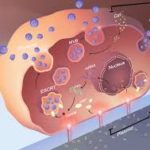



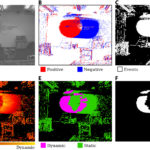
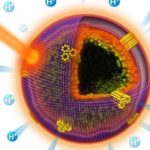
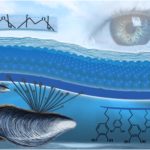
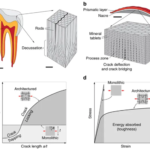

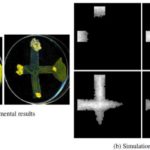
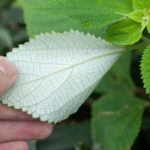


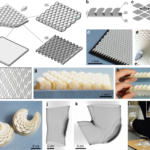


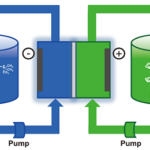



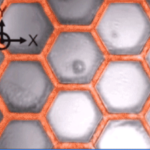
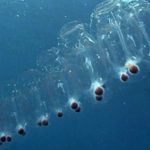
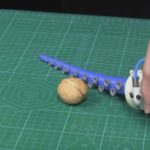
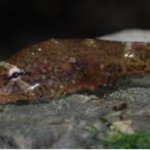
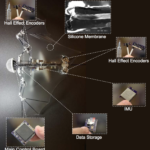
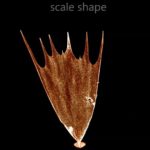


I imagine that the neurological circuits underlying these processes are governed by both 2d spacing maps with their brains as…
to reduce the impact of car accidents, it may be possible to study the force diverting physics of cockroaches to…
you see this type of head-bobbing stability in many avian creatures related to pigeons like chickens. the head ability to…
not like they taught horses how to run! this is an example of convergent evolution where both sea creatures and…
The brain functions in a similar way with neuronal connections. our brains are able to utilize the multiplicity of connections…